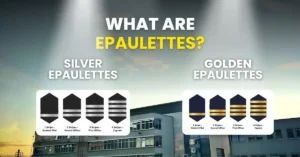How to Become a Pilot in India in 2025
Becoming a pilot in India is a dream for many young individuals who wish to touch the skies and command an aircraft. With the rapid growth of aviation in India, the demand for well-trained and certified pilots is rising. But how exactly does one become a pilot in India?
This blog provides a complete roadmap to help you understand the eligibility, courses, costs, exams, and licensing process to become a pilot in India—whether your goal is to fly for commercial airlines, charter services, or become an instructor.
🎯 Who Can Become a Pilot in India?
Before you get into the details, here are some basic eligibility criteria:
Minimum Age: 17 years (to start training), 18 years (to obtain CPL)
Education: 10+2 with Physics and Mathematics (Non-Medical)
Medical Fitness: Must clear DGCA Class 2 and later Class 1 medical examination
Nationality: Indian citizens and OCI holders are eligible
🛫 Types of Pilot Licenses in India
| License Type | Description |
|---|---|
| SPL (Student Pilot License) | Entry-level license for flight training; allows flying under supervision |
| PPL (Private Pilot License) | Allows flying non-commercial aircraft for personal use |
| CPL (Commercial Pilot License) | Enables flying commercial aircraft for airlines or charter services |
| ATPL (Airline Transport Pilot) | Required to become a Captain in an airline after gaining flying experience |
🧭 Step-by-Step Guide: How to Become a Pilot in India
Step 1: Ensure Eligibility
Complete your 10+2 with Physics and Math. If you don’t have these subjects, you can complete them via NIOS or other open schooling platforms.
Step 2: Get a Class 2 Medical Certificate
Before you begin training, apply for a DGCA Class 2 Medical. This includes:
Eye check-up (6/6 vision or corrected)
No color blindness
Hearing and physical fitness
Later, you’ll need a Class 1 Medical Certificate to apply for CPL.
Step 3: Apply for Computer Number (via eGCA)
A Computer Number is mandatory to appear for DGCA exams. You can apply via eGCA portal.
Step 4: Join a DGCA-Approved Flying School
Enroll in a reputable institute like FMS Aviation Academy that offers both:
Ground School Training for DGCA exams (Navigation, Meteorology, Technical, etc.)
Flying Training at an affiliated Flying Club in India or abroad
Step 5: Clear DGCA Ground Exams
Subjects for CPL exams include:
Air Navigation
Meteorology
Air Regulations
Technical General
Technical Specific
Radio Telephony (RTR-A exam)
You need to pass each paper individually to proceed.
Step 6: Complete Flying Hours (CPL)
To obtain a Commercial Pilot License, you must complete:
200 total flying hours, which includes:
Dual Flying
Solo Flying
Cross-country flying
Instrument and Night Flying
Flying hours can be completed in India or abroad at DGCA-approved training schools.
Step 7: Pass Skill Tests and Oral Exams
You’ll be assessed through check rides and viva voce by DGCA examiners.
Step 8: Apply for Commercial Pilot License (CPL)
Once you complete the above, you can apply for the CPL via eGCA. Ensure all documents like logbooks, certificates, and medicals are in order.
🏷️ Cost of Becoming a Pilot in India
| Component | Estimated Cost (₹ INR) |
|---|---|
| Ground School + DGCA Exams | ₹ 1.5 – ₹ 2 Lakhs |
| Flying Training (200 Hours) | ₹ 35 – ₹ 45 Lakhs |
| Medical & Exam Fees | ₹ 50,000 – ₹ 1 Lakh |
| Total Estimated Cost | ₹ 40 – ₹ 50 Lakhs |
Pro Tip: You can reduce costs by doing ground classes with FMS Aviation Academy and choosing flying schools in India or South Africa based on budget and quality.
🧠 Skills Needed to Become a Pilot
Strong command over English (ICAO Level 4 or above)
Decision-making under pressure
Good physical and mental health
Strong understanding of mathematics and physics
Teamwork and communication
🎓 Best Institutions for Pilot Training in India
While India has many flying schools, it’s important to choose academies that offer transparent training hours, good instructor-student ratios, and assist with DGCA documentation and interview preparation.
At FMS Aviation Academy, we offer:
DGCA Ground Classes (Offline/Online)
One-on-one mentorship
Interview preparation for airlines
Exam-focused mock tests
Guidance for RTR-A and ATPL
🚀 Career Path After CPL
Once you obtain your CPL, here are your career options:
| Pathway | Description |
|---|---|
| Airline First Officer | Join airlines as a trainee/co-pilot |
| Type Rating | Mandatory training to fly a specific aircraft |
| Charter Pilot | Fly corporate or charter aircraft |
| Flight Instructor | Train new student pilots |
| Cargo Pilot | Fly freight and cargo aircraft |
| ATPL (Captain Track) | After flying 1500 hours, apply for ATPL |
🔁 Alternative Path: Cadet Pilot Programs
Some airlines like IndiGo, Air India, or SpiceJet offer Cadet Pilot Programs where training, licensing, and job placement are bundled. These are more expensive but offer job security.
FAQs – How to Become a Pilot in India
Yes, if you have Physics and Math in 12th and meet medical criteria.
Soon, Arts & Commerce students will also be able to become pilots in India.
No, 10+2 (non-medical) is sufficient, but a degree helps if you apply abroad or seek backup careers.
Both have pros and cons. India ensures local regulation compatibility; abroad may offer faster completion.
It usually takes 18–24 months to complete CPL training including ground school and flying.
Type Rating is training on a specific aircraft (like Airbus A320 or Boeing 737). It's mandatory before joining an airline.
RTR (Aero) is a radio communication license from WPC. It's needed to legally operate aircraft radio equipment.
Yes, many banks offer loans for DGCA-approved pilot training programs.
You must have Physics & Math in 12th. If not, you can appear via NIOS or recognized boards.
DGCA is planning to approve Arts & Commerce as eligibility criteria and soon NIOS won't be required.

